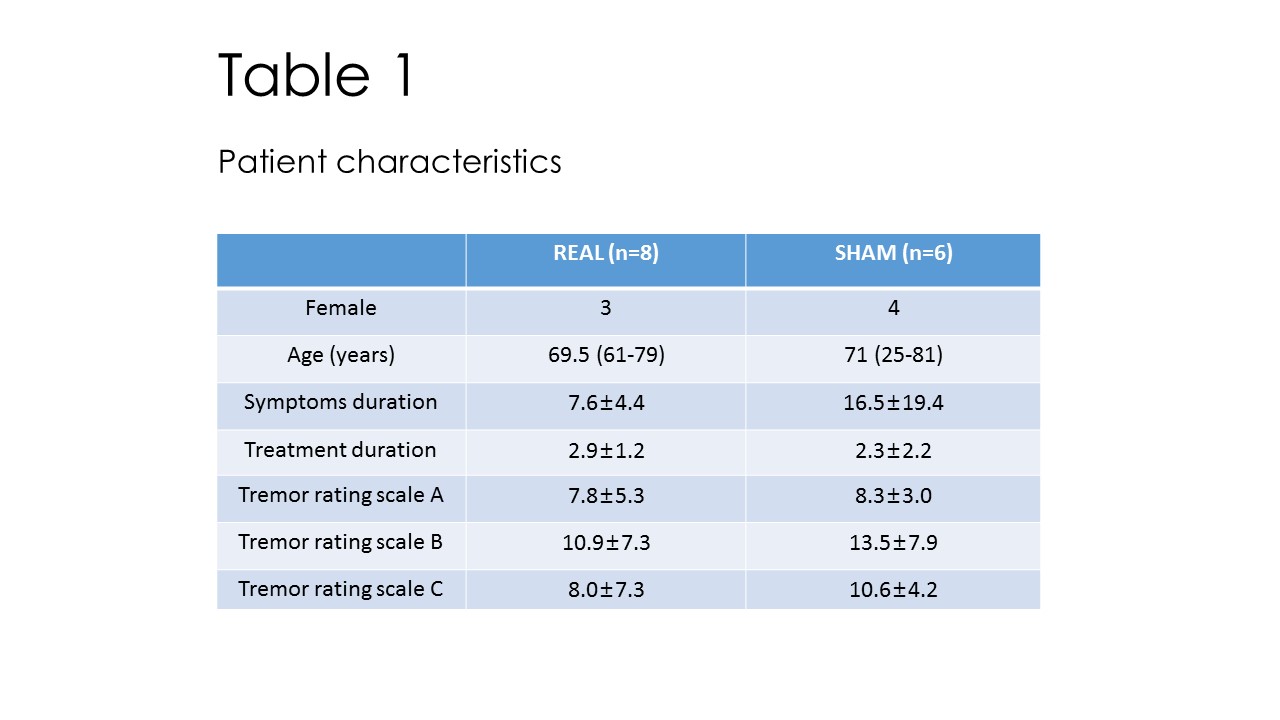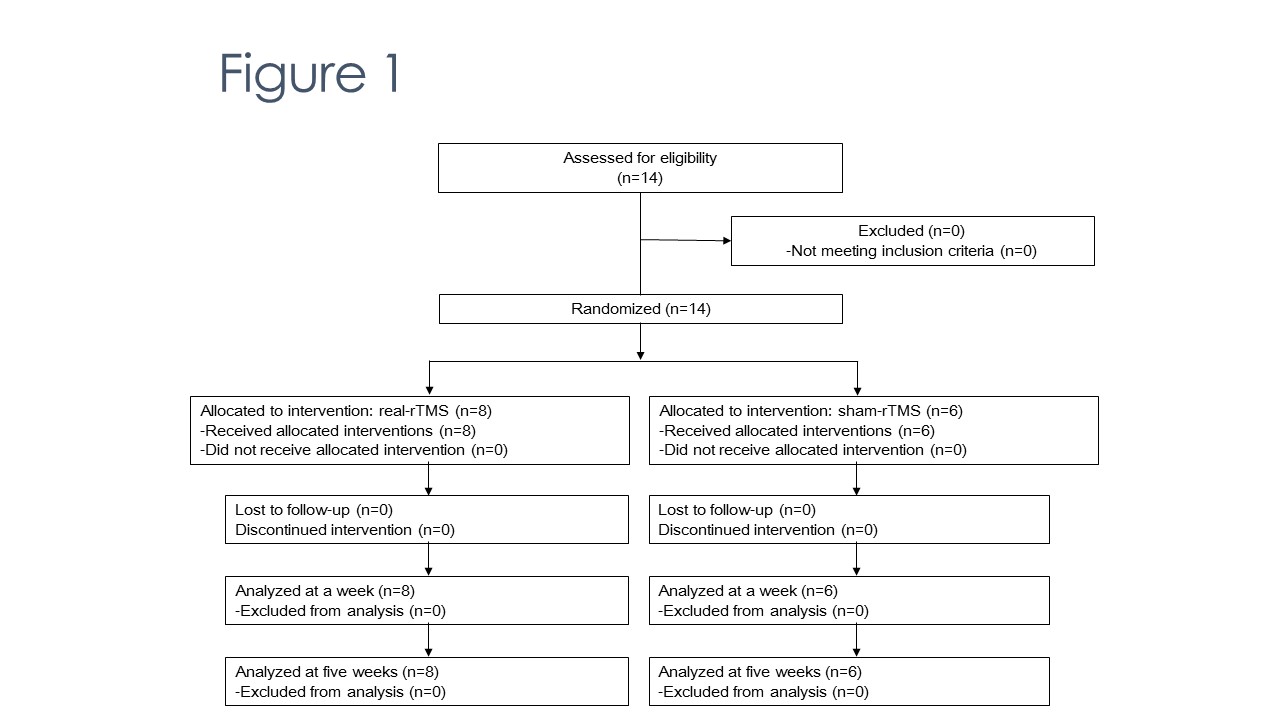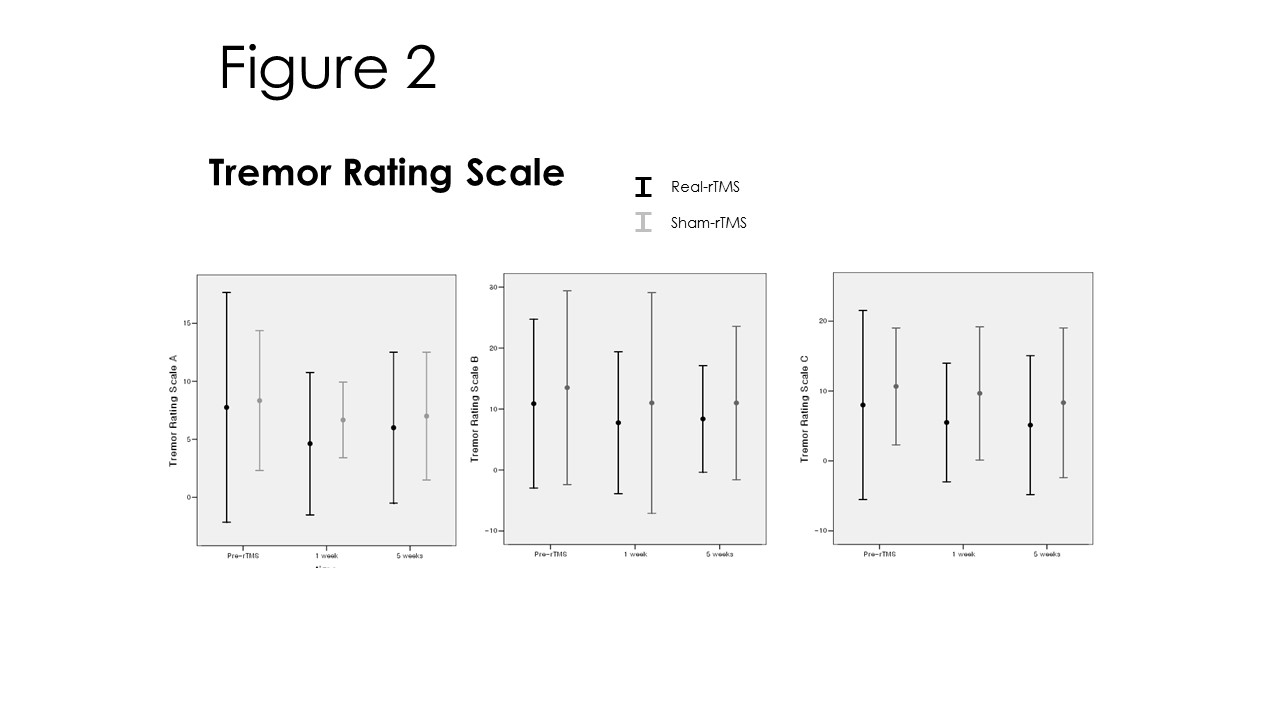Session Information
Date: Tuesday, June 6, 2017
Session Title: Tremor
Session Time: 1:45pm-3:15pm
Location: Exhibit Hall C
Objective: To investigate effect of cerebellar low-frequency repetitive transcranial magnetic stimulation (rTMS) as an ‘add-on’ treatment on patients with Essential tremor (ET)
Background: ET is a most common movement disorder in adult. It is not life threatening, but it can significantly impair the patients’ activity of daily lives. Beta-blockers and primidone have been used as the treatment of choices for patients with ET. However, up to 50% of the ET patients report that they are not satisfied to improve tremor symptoms by the medications.
Methods: This is a single-center, prospective, sham-controlled and single-blinded study. Fourteen ET patients participated in this study. ET was diagnosed when the patient has bilateral postural or kinetic tremor on the arms, no dystonia and no possibility of drug-induced secondary tremor. In addition, we included the subject in this study only if the patient has significant tremor with beta-blockers and other additive drugs as the symptomatic management. Subjects were randomized as a group of receiving real-rTMS and another group of receiving sham-rTMS. rTMS was applied over each cerebellum in turn. The order of the stimulation to each cerebellum was randomly assigned. For 5 days, 600 stimulations a day were applied with an intensity of 90% of the resting motor threshold (RMT) with 1-Hz frequency. Clinical tremor rating scale (CTRS) was measured before, a week and 5 weeks after starting day of rTMS procedure.
Results: Eight and 6 patients were randomized as groups of real and sham-rTMS, respectively (Figure 1). The mean age, symptoms duration and baseline CTRS scores were comparable between two groups (Table 1). ANOVA analysis showed that all three parts (A, B and C) of CTRS were not different before, a week and 5 weeks after starting rTMS procedure both in real and sham-rTMS groups (Figure 2). There was no adverse event including headache, dizziness, syncope and seizure in all subjects.
Conclusions: Cerebellar low-frequency rTMS is safe but not effective as an ‘add-on’ therapy in patients with ET.
To cite this abstract in AMA style:
H.-W. Shin, M. Hallett, Y. Sohn. Low-frequency repetitive transcranial cerebellar magnetic stimulation as an ‘add-on’ therapy in patients with Essential Tremor [abstract]. Mov Disord. 2017; 32 (suppl 2). https://www.mdsabstracts.org/abstract/low-frequency-repetitive-transcranial-cerebellar-magnetic-stimulation-as-an-add-on-therapy-in-patients-with-essential-tremor/. Accessed December 26, 2025.« Back to 2017 International Congress
MDS Abstracts - https://www.mdsabstracts.org/abstract/low-frequency-repetitive-transcranial-cerebellar-magnetic-stimulation-as-an-add-on-therapy-in-patients-with-essential-tremor/



